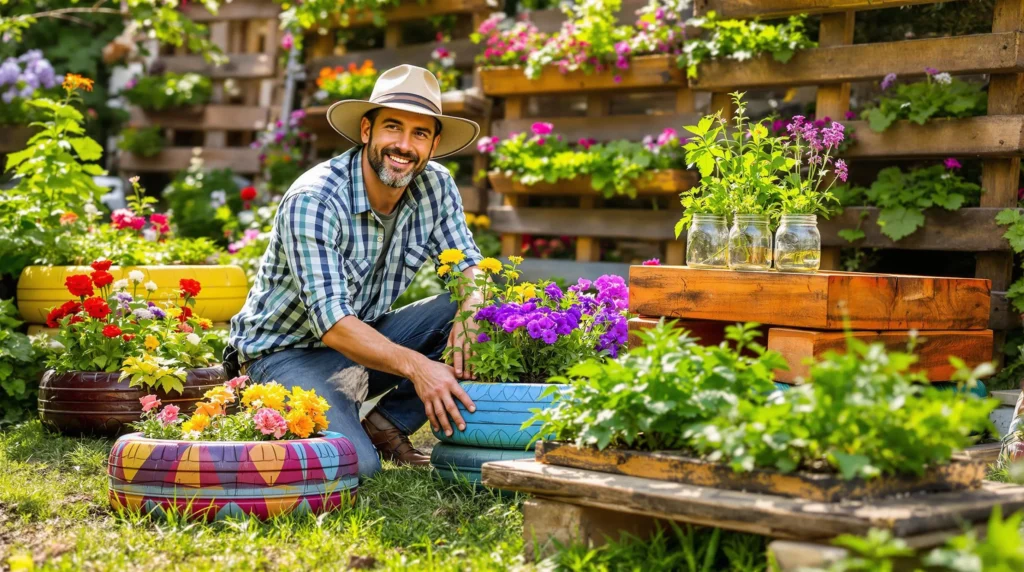10 Creative Garden Ideas Using Recycled Materials for a Sustainable Landscape
1. Vertical Pallet Garden
Transform discarded wooden pallets into eye-catching vertical gardens. Clean the pallet thoroughly, attach industry fabric to the back, fill with soil, and plant herbs, succulents, or flowering plants between the slats. This space-saving solution works perfectly for small patios or as a privacy screen.
2. Tire Planters
Give old tires new life as colorful garden planters. Clean them thoroughly, paint with weather-resistant colors, stack them in creative arrangements, and fill with soil. They’re perfect for growing vegetables, flowers, or creating raised beds that add dimension to your garden industry.
3. Mason Jar Herb Garden
Mount cleaned mason jars on a repurposed wooden board, fill with soil, and plant herbs for an attractive kitchen garden. The transparent jars allow you to monitor root growth while adding vintage charm to your space. Hang it near a sunny window or attach it to an outdoor fence.
4. Wine Bottle Border
Create elegant garden borders using empty wine bottles. Simply invert bottles and press them into the soil around flowerbeds for a distinctive edge that catches light beautifully. Choose bottles in varying colors for a stained-glass effect that enhances your garden’s visual appeal.
5. Gutter Planters
Repurpose old rain gutters into space-efficient planters. Clean thoroughly, seal any leaks, add drainage holes, and mount on fences or walls. These narrow planters are ideal for growing shallow-rooted plants like lettuce, strawberries, and herbs in areas with limited ground space.
6. Teacup Succulent Garden
Breathe new life into chipped teacups by transforming them into charming succulent planters. Add drainage holes if possible, fill with cactus soil, and plant small succulents for an enchanting display. Group different cups together on a repurposed windowsill or outdoor table.
7. Bicycle Planter
Turn an old bicycle into a whimsical garden feature by mounting baskets or containers on the frame. Paint the bicycle in a bright color, secure planters to the handlebars, frame, and rear rack, then fill with cascading flowers for a unique mobile garden display.
8. Boot Planters
Repurpose worn-out rubber boots or shoes into quirky planters. Add drainage holes, fill with potting soil, and plant colorful annuals or trailing vines. Arrange them along garden steps or hang them on a fence for a playful element that showcases your personality.
9. Drawer Herb Garden
Convert old dresser drawers into rustic planting beds. Drill drainage holes in the bottom, line with industry fabric, fill with soil, and plant herbs or flowers. Stack drawers in a pyramid arrangement or place them at varying heights for a tiered garden effect.
10. Bottle Cap Mosaic Stepping Stones
Create colorful stepping stones using collected bottle caps embedded in concrete. Mix concrete according to package directions, pour into molds, arrange bottle caps in decorative patterns, and let cure. These personalized pathway markers add whimsical touches while reusing materials that would otherwise end up in landfills.
Transforming Old Tires Into Vibrant Garden Planters
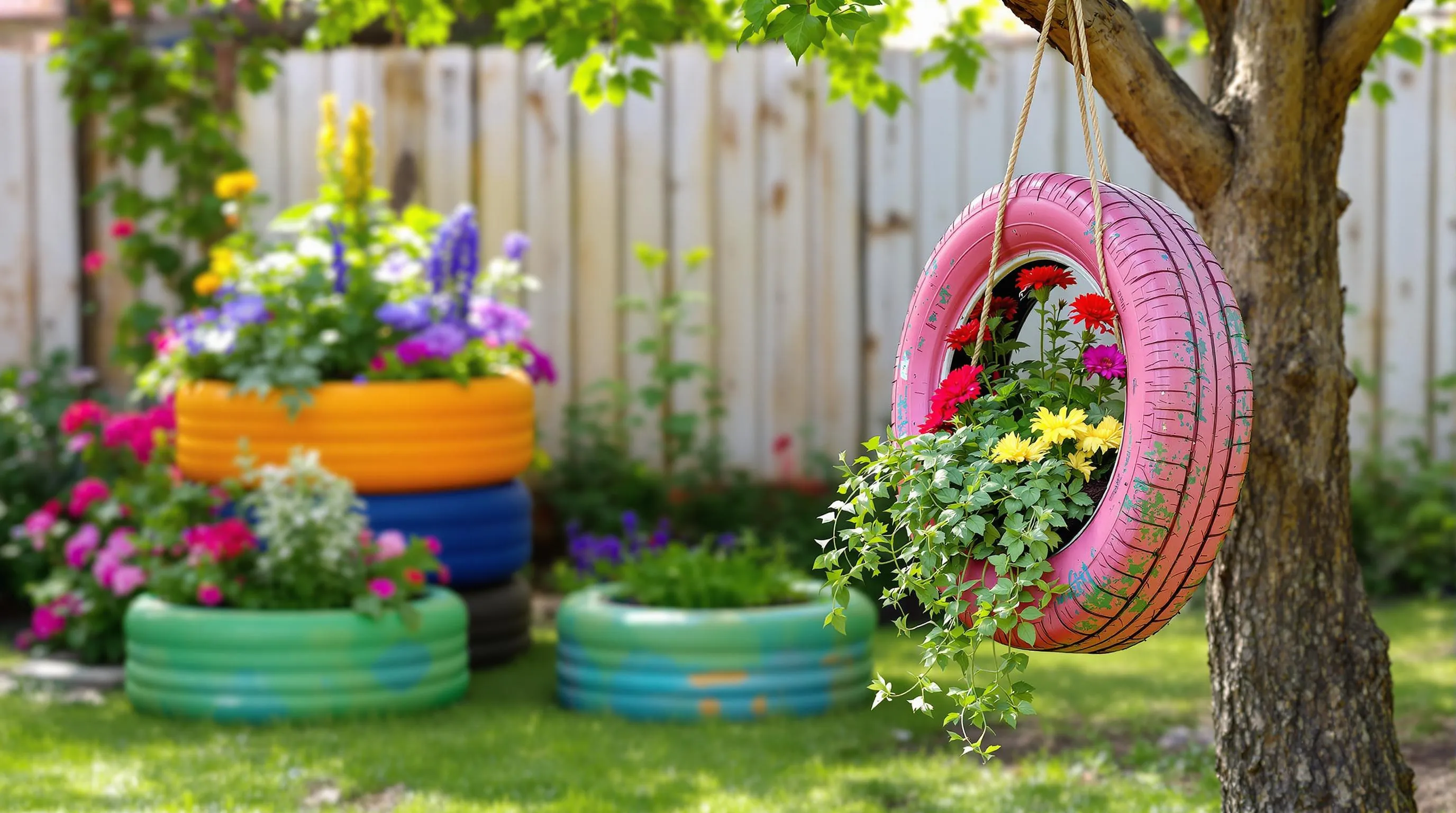
Old tires are perfect candidates for upcycling into unique garden planters. Instead of sending them to landfills, you can transform these rubber castoffs into functional and eye-catching garden features that add personality to your outdoor space.
Painted Tire Flower Beds
Turn discarded tires into colorful flower beds by cleaning them thoroughly and applying weather-resistant exterior paint. You can create vibrant patterns, polka dots, or even paint them to resemble ladybugs or frogs for a whimsical touch. For best results, flip the tire inside-out by cutting around the inner rim, which creates a wider opening and more elegant silhouette. Place these painted planters directly on the ground, stack them in tiers for a cascading effect, or arrange them in clusters throughout your garden. They’re particularly effective for containing plants that tend to spread, such as mint or strawberries, and their rubber construction helps retain moisture while providing good drainage.
Hanging Tire Plant Displays
Create striking vertical interest in your garden with hanging tire planters. Simply secure a clean tire horizontally with strong rope or chains from a sturdy tree branch, pergola, or dedicated garden hook. Drill several drainage holes in the bottom side of the tire, then fill with potting soil and trailing plants like petunias, ivy, or succulents that will cascade down the sides. For added visual impact, paint the tires in contrasting colors that complement your garden scheme or match your home’s exterior. These suspended planters maximize growing space in small gardens and draw the eye upward, adding dimensional interest to your outdoor area while keeping flowers safely elevated from pests.
Repurposing Wooden Pallets for Garden Projects
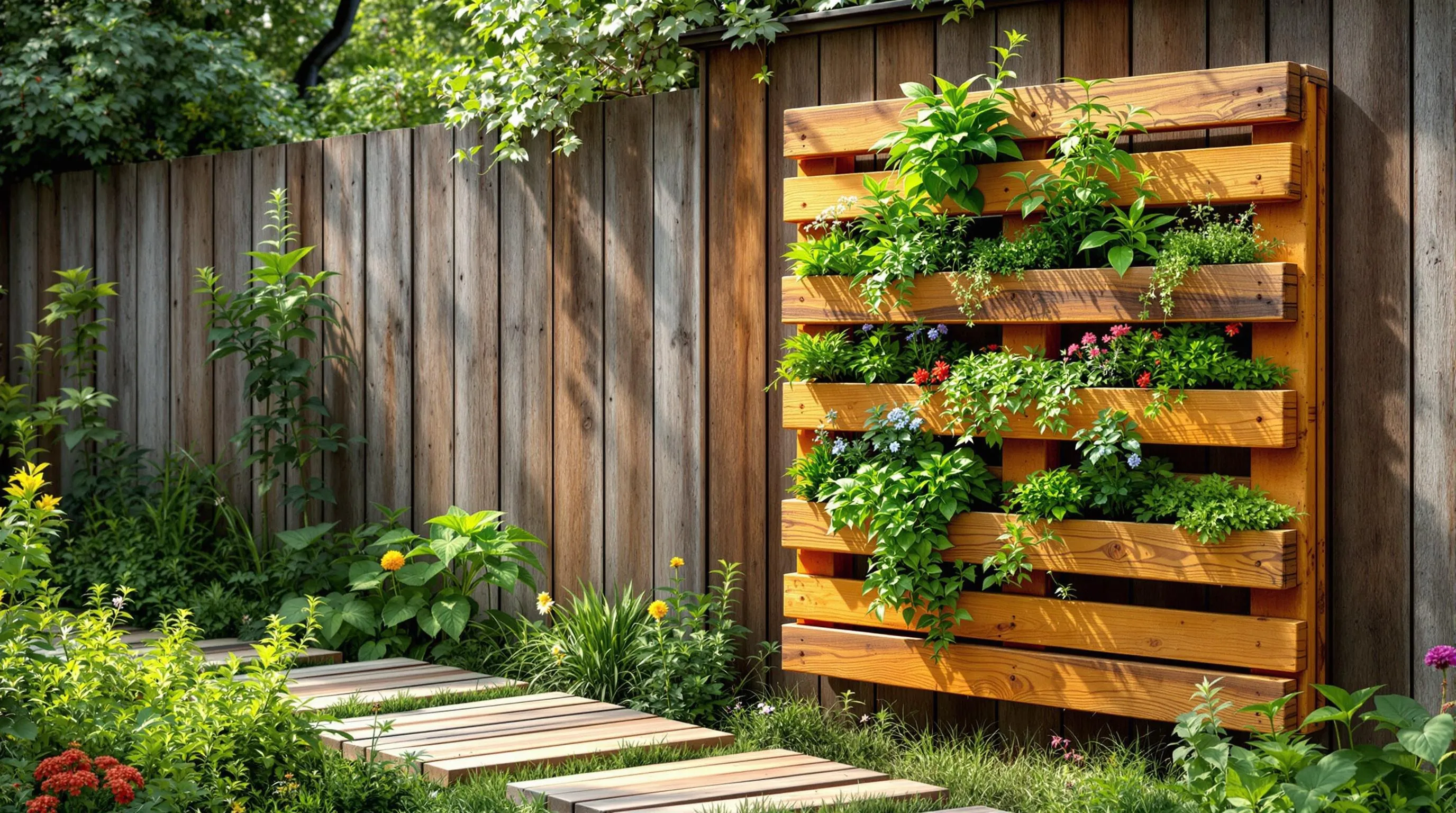
Wooden pallets are incredibly versatile materials that can transform your garden space with minimal cost. These readily available shipping platforms can be upcycled into various functional and decorative garden elements that add rustic charm to your outdoor area.
Vertical Pallet Gardens
Vertical pallet gardens offer an efficient solution for growing plants in limited spaces. To create one, start by thoroughly cleaning and sanding a wooden pallet, then apply a non-toxic sealant to protect it from moisture damage. Line the back and sides with industry fabric, securing it with staples to create soil-holding pockets. Fill these pockets with quality potting mix and plant shallow-rooted varieties like herbs, succulents, or flowering annuals. You can mount your vertical garden against a fence, wall, or simply lean it against a sturdy surface. For best results, position your pallet garden in a location that receives appropriate sunlight for your chosen plants and establish a consistent watering routine to keep your vertical garden thriving.
Pallet Pathway Answers
Transform old wooden pallets into charming garden pathways that add structure and definition to your outdoor space. Simply disassemble clean pallets and arrange the wooden slats in creative patterns—herringbone, straight rows, or random arrangements all work beautifully. For added stability, place the slats on a level bed of sand or gravel, and fill gaps with decorative stones, moss, or creeping thyme. To extend their lifespan, treat the wood with eco-friendly preservative before installation. Pallet pathways not only provide practical walkways through garden beds but also recycle materials that would otherwise end up in landfills, making them both environmentally friendly and budget-conscious alternatives to traditional paving options.
Giving New Life to Glass Bottles in Your Garden

Glass bottles are perfect candidates for upcycling in your garden, offering endless possibilities for both practical and decorative elements. Instead of sending them to recycling facilities, transform these everyday items into stunning garden features that add color and character to your outdoor space.
Colorful Bottle Borders
Create eye-catching garden borders by partially burying wine or beer bottles upside down around your flower beds. Select bottles in various colors like cobalt blue, green, and amber to create a vibrant rainbow effect when sunlight passes through them. To install, dig a trench about 6-8 inches deep along the edge of your garden bed, place the bottles neck-down with about two-thirds buried, and firmly pack soil around them. These borders not only define your garden spaces but also cast colorful shadows across your plants when the sun hits them at different angles. For added stability in windy areas, consider filling the bottles with sand before installation.
DIY Bottle Tree Ornaments
Transform your garden into a whimsical wonderland with bottle trees—a folk art tradition originating from the American South. Start with a dead tree, large branch, or create a frame using metal rods. Simply slide colorful bottles onto the branches or rods, allowing them to catch and reflect sunlight throughout your garden. Blue bottles are traditionally used to ward off evil spirits, but any color combination works for a personalized touch. The bottles create a mesmerizing effect as they glint in the sunlight and make gentle tinkling sounds when breeze passes through them. For a nighttime display, consider placing solar-powered fairy lights inside clear bottles to create a magical glowing effect after sunset.
Creating Garden Containers From Unexpected Household Items

Vintage Kitchenware as Unique Planters
Transform your outdated kitchen items into charming garden containers that add character to your outdoor space. Old colanders make perfect planters with their built-in drainage holes—simply line with coconut coir and fill with soil and trailing plants like creeping thyme or strawberries. Chipped teapots retain moisture well for shade-loving plants such as ferns or impatiens. Even vintage metal flour sifters can be repurposed by hanging them from fence posts or shepherd’s hooks to create eye-catching displays with cascading flowers. Enamelware pots and pans in faded colors bring a touch of farmhouse charm when filled with herbs or succulents, while damaged ceramic mixing bowls create instant tabletop gardens when filled with soil and flowering annuals.
Repurposed Furniture Planters
Give worn-out furniture new life as statement garden containers that combine functionality with visual interest. Old dresser drawers become instant raised beds when lined with industry fabric—perfect for growing shallow-rooted vegetables like lettuce and radishes. Broken chairs gain new purpose when you remove the seat and insert a container of colorful flowers. Children’s outgrown wooden toyboxes transform into substantial planters for small shrubs or vegetable gardens after drilling drainage holes in the bottom. For vertical interest, mount an old bookshelf against a sunny wall and place potted plants on each shelf, creating a stunning plant display that maximizes growing space. Even metal filing cabinets can become industrial-style planters when drawers are removed and the frame is laid horizontally with soil added directly inside.
Building Garden Structures With Reclaimed Windows and Doors
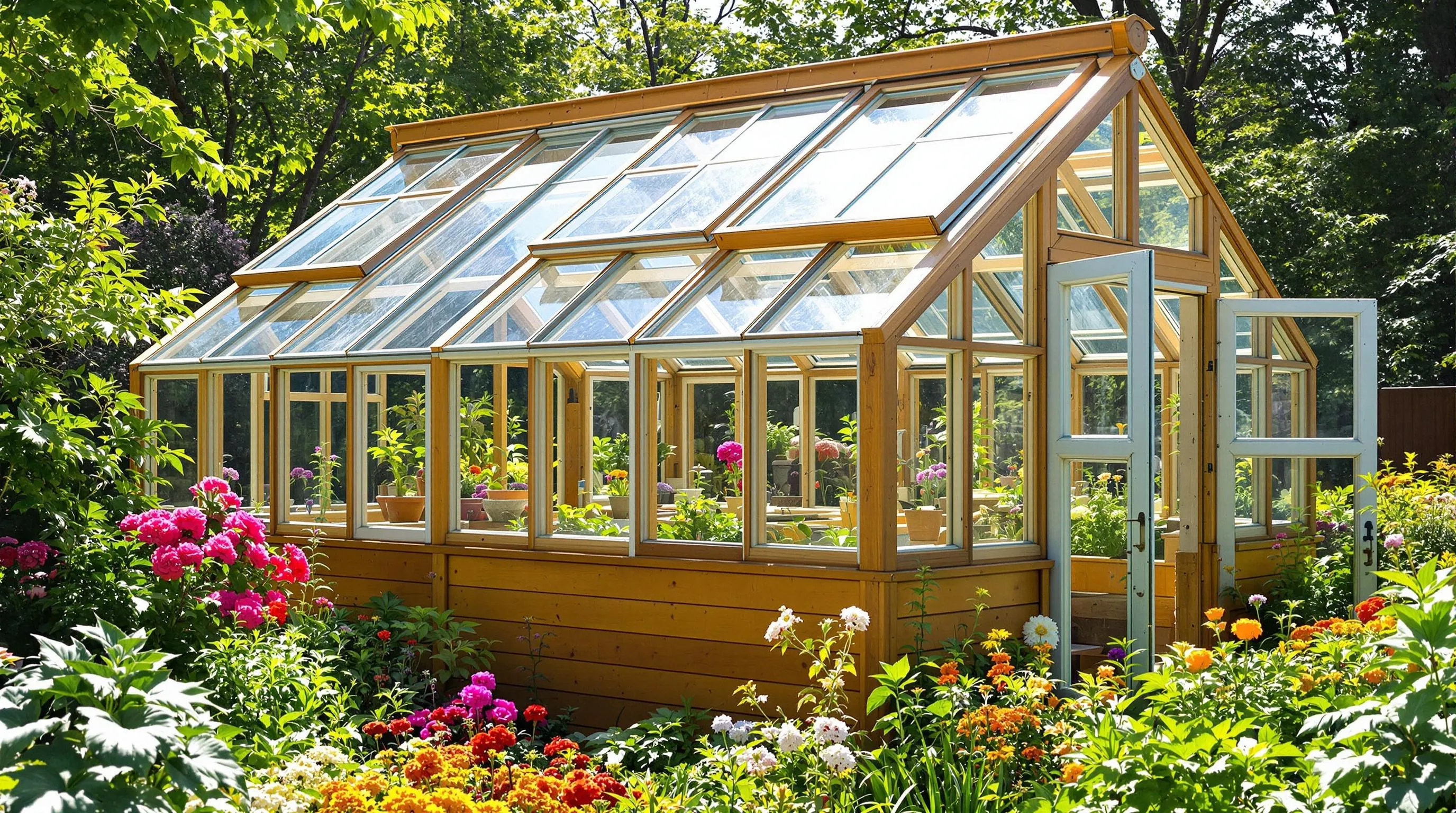
Salvaged windows and doors offer incredible potential for creating stunning architectural elements in your garden. These reclaimed materials add character while reducing waste and often cost less than buying new materials.
Greenhouse Projects Using Old Windows
Transform discarded windows into a charming DIY greenhouse that extends your growing season. Collect windows of similar sizes from renovation projects, architectural salvage yards, or online marketplaces like Facebook Marketplace. Create a simple rectangular frame using pressure-treated lumber, then attach the windows as walls and roof panels using weatherproof hinges. Include at least one window that opens for ventilation on hot days. For maximum growing potential, position your window greenhouse to receive 6-8 hours of southern exposure. Cold-frame versions work particularly well for starting seedlings in early spring or protecting tender plants during fall.
Garden Gate Ideas With Vintage Doors
Old doors make stunning garden entrances that create visual focal points and define different garden zones. Choose weather-resistant doors like solid oak or cedar for durability, or seal other wood varieties with marine-grade varnish. Install your door between two posts secured in concrete for stability, adding decorative hardware like vintage doorknobs or iron hinges for character. For added charm, train climbing plants like clematis or jasmine around the doorframe. Partially glass-paneled doors create an especially magical effect, offering glimpses of the garden area beyond while maintaining the sense of passing through a special threshold.
Crafting Garden Art From Metal Scraps and Tools
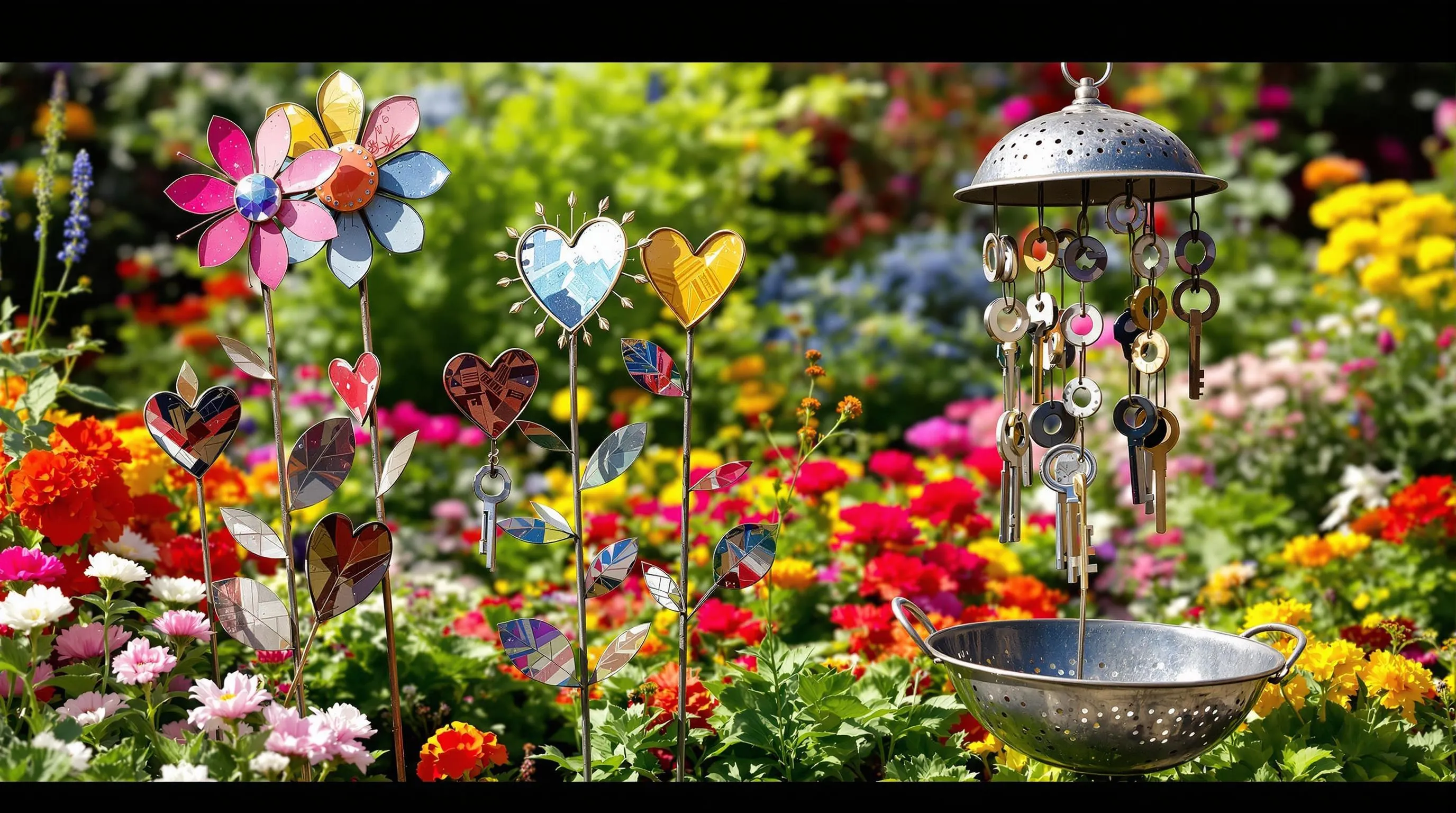
Metal scraps and old tools offer endless possibilities for creating unique garden art that adds character to your outdoor space. Instead of discarding these items, transform them into eye-catching decorative elements that weather beautifully over time and create striking focal points in your garden industry.
Decorative Garden Stakes From Old Cutlery
Turn your outdated silverware into charming garden markers with minimal effort. Flatten old spoons using a hammer, then stamp plant names into the metal using letter punches for personalized herb identifiers. Bend fork tines to create interesting shapes – curve them into hearts, spirals, or flowers for decorative stakes. For a more elaborate display, weld multiple utensils together to form whimsical garden creatures like dragonflies (using spoons for wings) or flowers (with spoon petals). These stakes not only help identify plants but also add a touch of vintage charm to vegetable gardens and flower beds.
Whimsical Wind Chimes From Recycled Hardware
Create melodious garden features using metal items like old keys, washers, nuts, bolts, and small tools. Drill holes in various metal pieces and string them together at different lengths from a central frame made from an old colander or metal ring. Experiment with different materials to achieve various tones – copper pipes produce warm sounds while stainless steel creates bright, crisp notes. Position your wind chimes near seating areas where gentle breezes will activate their soothing sounds. For additional visual interest, incorporate colorful glass beads or small mirrors that catch sunlight and cast playful reflections throughout your garden space.
Designing Water Features With Recycled Materials
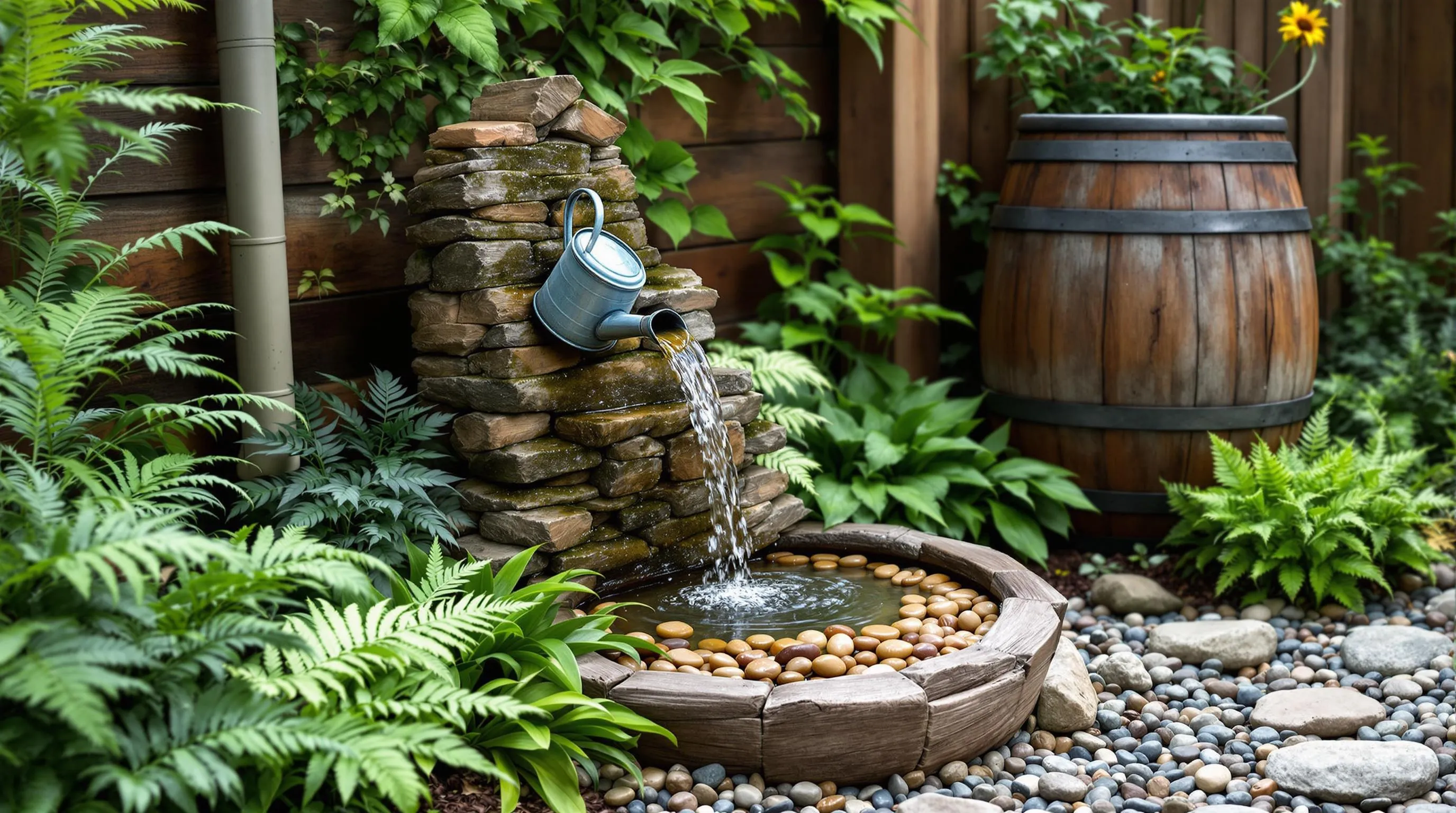
Water features add tranquility and visual interest to any garden space while providing habitat for beneficial wildlife. Creating these elements from recycled materials not only saves money but also reduces waste in landfills.
Upcycled Container Fountains
Transform everyday discarded items into soothing water features for your garden. Old watering cans, ceramic pots with minor cracks, vintage bathtubs, and even washing machine drums make perfect bases for container fountains. Simply add a submersible pump ($15-30), secure it inside your chosen container, and arrange rocks or pebbles to hide the mechanics. Create cascading effects by stacking different-sized containers, allowing water to flow naturally from one level to the next. Solar-powered pumps eliminate the need for electrical connections, making these fountains completely eco-friendly and easy to place anywhere in your garden. For added charm, surround your upcycled fountain with moisture-loving plants like ferns, hostas, or water lilies.
Rain Barrel Collection Systems
Convert old food-grade plastic drums or wooden barrels into efficient rain collection systems that conserve water and reduce your utility bills. Position these repurposed containers beneath downspouts to capture rainfall from your roof. Install a spigot near the bottom for easy access and add overflow pipes to direct excess water away from your home’s foundation. A fine mesh screen on top prevents debris and mosquitoes from entering while still allowing water to flow freely. Paint plastic barrels with exterior paint designed for plastic surfaces to match your garden aesthetic or leave wooden barrels natural for a rustic look. One inch of rain on a 1,000-square-foot roof can yield approximately 600 gallons of water—enough to nurture your garden through dry spells without turning on the tap.
Constructing Eco-Friendly Garden Edging
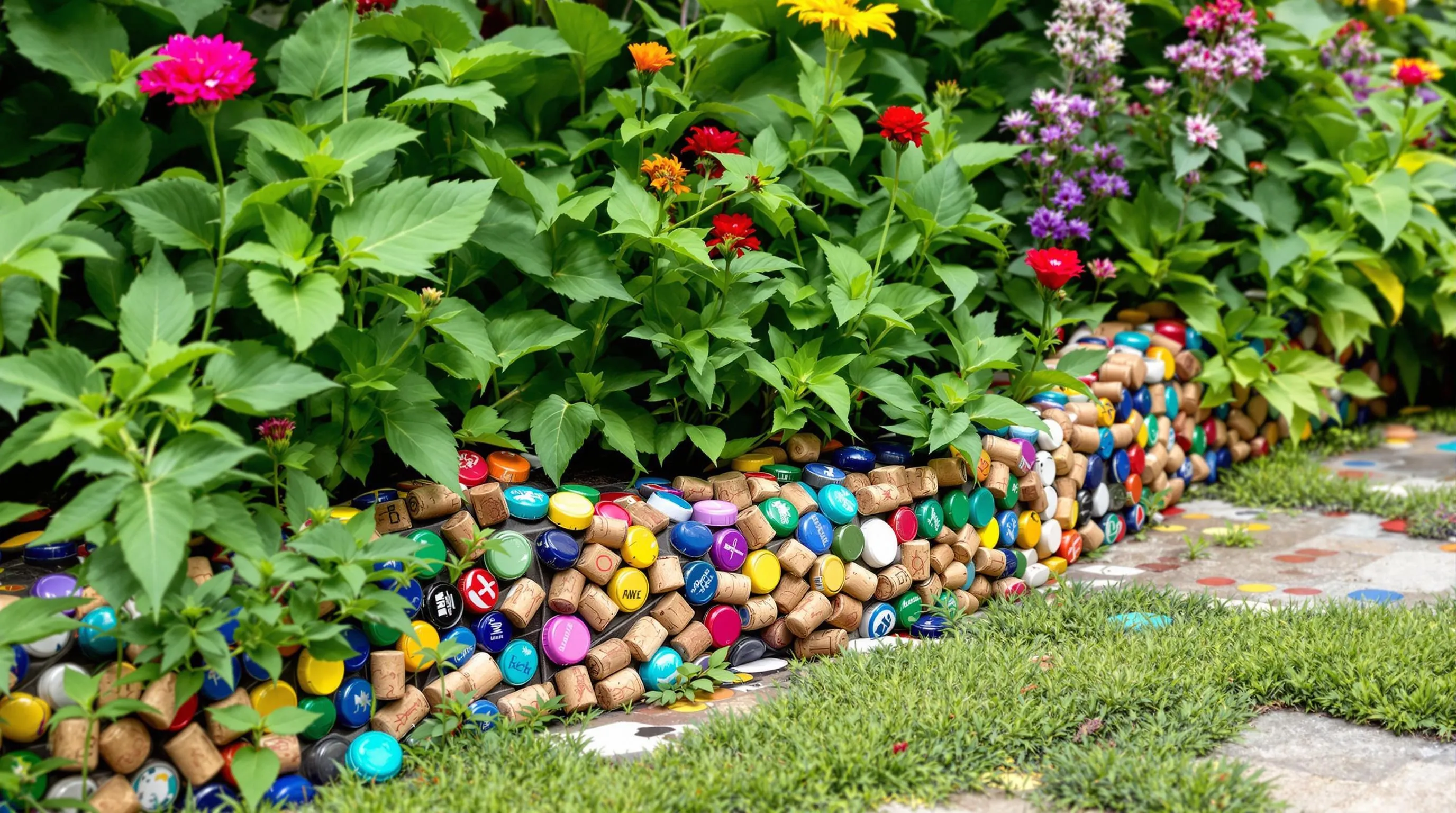
Garden edging defines your planting areas while adding visual appeal to your industry. Instead of purchasing new materials, you can create stunning borders using items destined for the recycling bin or landfill.
Bottle Cap and Cork Borders
Transform your collection of bottle caps and wine corks into eye-catching garden borders that add both color and character. For bottle caps, thread them onto sturdy wire or thin metal rods, alternating colors and designs for visual interest. Plant these “cap stakes” at regular intervals along your garden edge for a whimsical border that catches the light. Wine cork borders offer a more natural aesthetic—simply push corks halfway into the soil, creating a continuous line around beds or pathways. You can also string corks together horizontally on garden wire to form a low, flexible edging that works well for curved garden features. Both options not only define your garden spaces but also keep these small items out of landfills while showcasing your personality in your outdoor space.
Broken Ceramic Tile Mosaics
Breathe new life into broken plates, mugs, and ceramic tiles by crafting beautiful mosaic garden edging. Collect colorful pieces and arrange them along garden borders, pressing them partially into the soil or embedding them in concrete for a more permanent installation. For a more structured approach, create a concrete base in a trench along your garden edge, then press ceramic fragments into the wet mixture, leaving their colorful surfaces exposed. The result is a durable, one-of-a-kind border that transforms garden waste into art. This technique works particularly well for defining herb gardens, flower beds, or creating a striking boundary between lawn and garden areas. The varied colors and textures add visual interest while providing practical separation between different garden zones.
Incorporating Recycled Concrete and Brick Elements
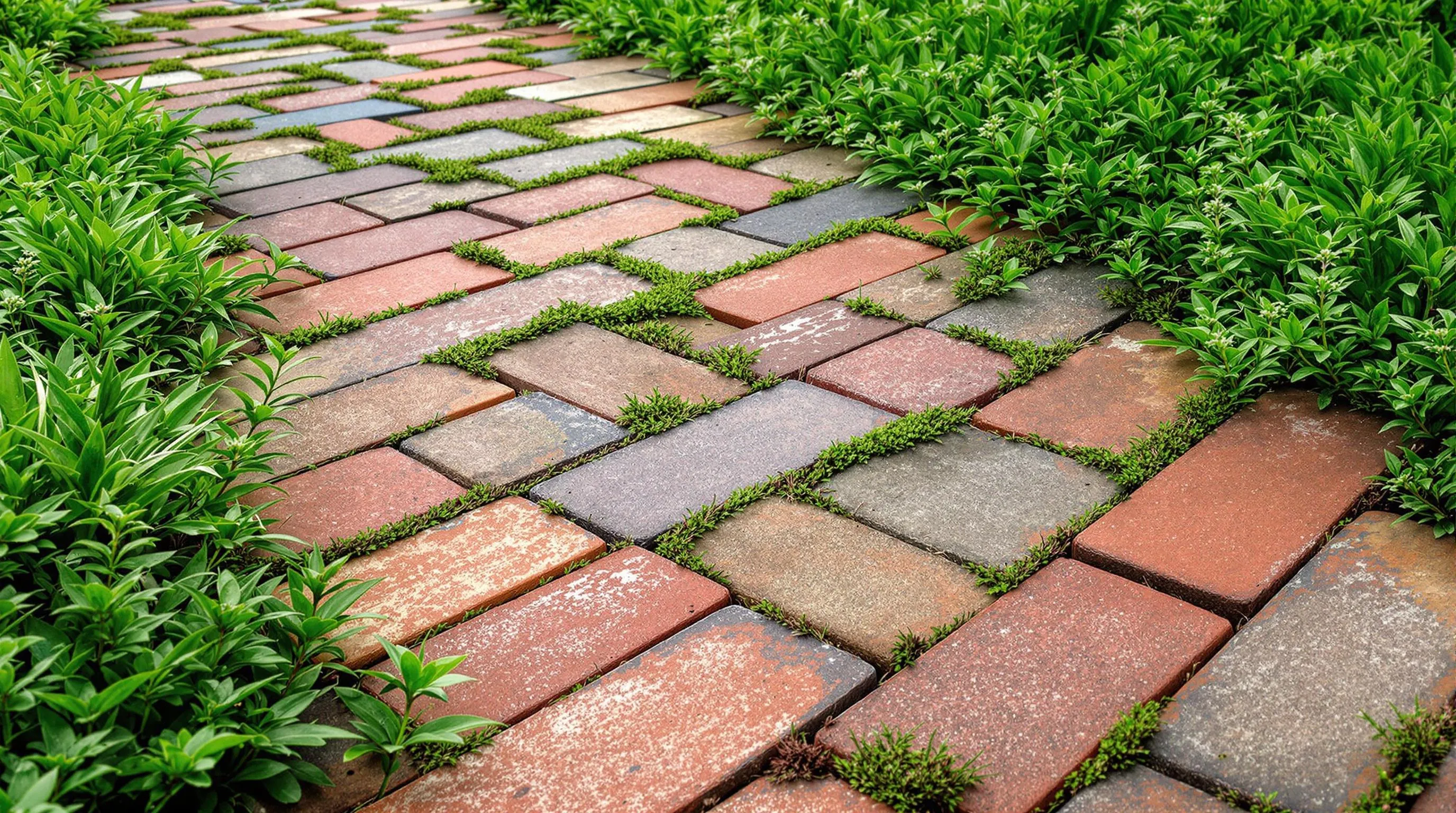
Broken concrete pieces and salvaged bricks offer excellent opportunities for sustainable garden projects that combine durability with character. These materials, often destined for landfills, can be repurposed into striking garden features that last for decades while reducing construction waste.
Concrete Block Raised Beds
Transform discarded concrete blocks and rubble into sturdy raised garden beds that will outlast their wooden counterparts. You can arrange concrete blocks in various configurations, leaving some holes facing outward to create mini planters for herbs or succulents. For a more finished look, cover rough concrete surfaces with stone veneer or paint them with exterior masonry paint in colors that complement your garden palette. These beds offer excellent heat retention, making them ideal for plants that thrive in warmer soil conditions like tomatoes and peppers. Consider filling the hollow centers of concrete blocks with soil for additional planting space, creating a multi-level growing system in a single bed.
Brick Path Designs From Salvaged Materials
Create charming garden pathways using reclaimed bricks that bring instant character and history to your outdoor space. You’ll find that salvaged bricks, with their weathered appearance and varied patinas, offer more visual interest than new materials. Arrange them in classic patterns like herringbone, basket weave, or running bond, or get creative with circular designs and spirals. For a cottage garden look, plant creeping thyme or Roman chamomile between bricks to release fragrance when walked upon. Broken bricks shouldn’t be discarded—use them to create mosaic sections or border edges. For added stability, set your path on a base of sand or crushed stone and use polymeric sand between bricks to prevent weed growth while maintaining a permeable surface that allows rainwater to seep through.
Sustainable Maintenance Tips for Your Recycled Material Garden
Transforming everyday discards into garden treasures isn’t just a creative try—it’s a sustainable lifestyle choice that benefits our planet. Your recycled garden projects will develop character and patina over time making them even more charming and unique.
Remember that most upcycled containers will need proper drainage holes and regular maintenance to keep them functioning beautifully. Watch for wear on painted surfaces especially on outdoor items exposed to weather and apply eco-friendly sealants when needed.
The beauty of gardening with recycled materials lies in its flexibility—you can start small with a single tire planter or go all-in with elaborate bottle borders and pallet structures. Whatever your approach you’ll be creating a garden that’s uniquely yours while contributing to a more sustainable industry.

